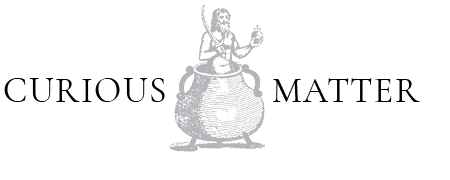Poison
April 5 – May 17, 2009
Kenric McDowell, Swami, 2008. Digital c-print, 20 X 24 inches.
Sarah Pfohl, Line and Point: Diseased Cell, 2009. Styrofoam, toothpicks, paint, 5 x 5 x 5 inches.
Jeanne Mischo, Dead Flowers, 2008. Photograph, 12 X 16 inches.
Ross Bennett Lewis, Prague Gunboy, Czech Republic, 2004. Selenium-toned fiber-based silver print, 8 X 10 inches.
WHEN THE DESIRE TO FIND a passive, sophisticated method of eliminating undesirable people becomes a consideration, poison has captured the imagination for millennia. It appears in folk tales, fairy tales, opera and murder mysteries. Poisoning has become the clean, classic way evil characters subdue and eliminate a rival without the use of brute force.
Historically, there have been many instances of poisoning to clear the way to a throne, a court position or an inheritance. Lucrezia Borgia gained her notoriety as a Renaissance beauty who seduced and then subsumed several gentlemen who stood in the way of her brother’s strivings for power. But poison is not just a substance used to remove inconvenient competition. Curious Matter explores the different ways artists respond to this concept.
Taking his cue from fairy tales, Raymond E. Mingst with You’re Not Out of the Woods Yet Dearie finds the hand that offers the apple or receives it, proffers the lesson on the spindle or is pricked by it, to be the interesting aspect. The action of passing and taking, where the fate is realized becomes his subject. Carrie Fucile with Kiss 2 explores the magic of the kiss to (in her words) “make it better,” or as the antidote to revive the fallen, and more often its failure to do either.
Often a poison can be used as a treatment to cure, it being a matter of dosage for the survival or death of the patient. Mercury was once used as a cure for syphilis before the discovery of antibiotics. The premise behind chemotherapy is one of using a mixture of poisons to destroy the cells of the body to rid it of cancer. Lee Johnson with his sculptures of mangled body parts, hopelessly intertwined with machine parts delves into the uses and abuses of modern medicine to keep us alive at any cost. Sarah Pfohl exposes her own experiences with disease in Line and Point: Diseased Cell. She constructs a fragile object that visibly recreates the failure of the cells of her body as she imagines them. While Brandy Wolf shows us the innocent way that an illness can become a contagion with her row of babies, To Sew a Pox.
But the mind can become poisoned as well through seemingly innocuous ways. Andrew Graham finds religion to be a main point of entry to fill the mind with destructive ideas. Kara Smith finds social indoctrination insidious in Green as Goslings Now, offering a nod to pre-WWII social conditions. Kay Kenny sheds light on the poisonous aspects of our need to create myths out of information that we don’t necessarily understand or are only privy to part of, with North Star.
The environment was also a point of departure for many of the artists. Whether it is Jeanne Mischo’s Dead Flowers offering a glance into the ancient herbals where the study of the negative properties of plants has been recorded. Or, Kelly Vetter alluding to the innocent beginnings of industry and its then unknown effects on the environment with her Galway Girl. Kimberly Witham’s Possum Paw is an elegant study of an animal in death and also comments on the destruction of natural habitats and the victims of their loss.
Poison is more than our romantic notions of hemlock and horror. The artists here have sensitively distilled the tincture to find its purest forms. They have processed the idea into a strong dose of imagination and art.
THE ARTISTS
Aica
John Belardo
Arthur Bruso
Carrie Fucile
Christy Georg
Andrew Graham
Gail Goldsmith
Lee Johnson
Kay Kenny
Kevin A. Kepple
Ross Bennett Lewis
Kenric McDowell
Raymond E. Mingst
Jeanne Mischo
Sarah Pfohl
Matt Pych
Kara Smith
Kikuko Tanaka
P. Teramode
Kelly Vetter
Kimberly Witham
Brandy Wolfe
